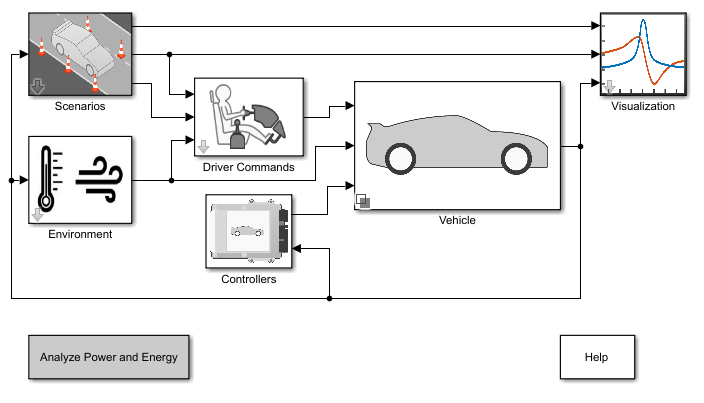Flow Boundary
Flow boundary for ambient temperature and pressure
Libraries:
Powertrain Blockset /
Propulsion /
Combustion Engine Components /
Fundamental Flow
Description
The Flow Boundary block implements a flow boundary that typically represents ambient temperature and pressure. Engine models require flow boundaries at the intake inlet and exhaust outlet. In dynamic engine models, flow-modifying components (for example, flow restriction, turbines, and compressors) connect to control volumes and flow boundaries.
You can specify these block configurations:
Constant pressure and temperature
Externally input pressure and temperature
The Flow Boundary block outputs pressure, temperature, and specific enthalpy:
The block models the mass fractions as dry air, resulting in these mass fractions:
yN2 = 0.767
yO2 = .233
The equation uses these variables.
| T | Temperature |
| h | Specific enthalpy |
| cp | Specific heat at constant pressure |
| yN2 | Nitrogen mass fraction |
| yO2 | Oxygen mass fraction |
Power Accounting
For the power accounting, the block implements these equations.
| Bus Signal | Description | Equations | ||
|---|---|---|---|---|
|
|
| Heat flow rate to flow restriction | qorf |
|
|
| Heat flow rate to environment | -qorf | |
|
| Not used | |||
Examples
Ports
Input
Output
Parameters
References
[1] Heywood, John B. Internal Combustion Engine Fundamentals. New York: McGraw-Hill, 1988.
Extended Capabilities
Version History
Introduced in R2017a

